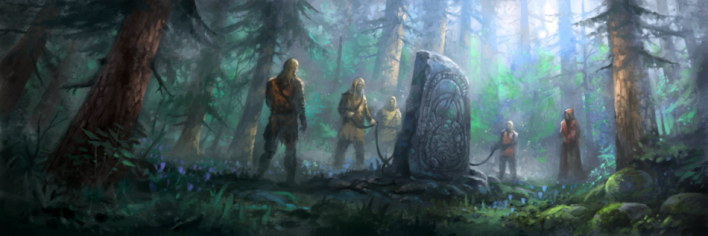Leggi
Culture
Culture and cultural heritage
Ritual Dance
Dance of Fire
Girls are raised and educated by their karass mothers involving dance, gymnastics and other high physical fitness activities; together with other subjects such as music, poetry and moral integrity. In both training and community performance, they would dance stark naked around a central point (be it a large pyre, a rune stone or an important figure) choreographed to jump high while chambering their heels to their buttocks and raising their arms to their sky.Dance of Earth
Boys are herded through their childhood by graduates who would have left the karass system only one year prior. These young adults work through stable stances and rhythmic movements that resemble the exercises for muscular conditioning and pain-tolerance that are derived from military past traditions.Common Dress code
As a general rule the less clothes one has to wear, the more influential they are in the culture.
Upper Hierarchy
Many men went shirtless throughout much of the year, only wearing cloaks when it got very cold. Warg chiefs are known for their elaborately decorated war shirts of feathers, fur from ermines or rabbits, porcupine quills, and glass beads gotten through trade.Lower Hierarchy
Long Sleeve
Women generally wore skirts and leggings, shirts or tunics and longer buckskin dresses. Most men wore a breech cloth which composed of a piece of material tucked into a belt that would cover the front and back. When it was warm, this was all the men wore. In cooler times, men would wear leggings to keep their legs warm.Quick Dry
Imported ayate fibers are the preferred material to weave cloths, but are difficult to acquire due to the hard-to-cross hunting tracks. Locally; vines, otter furs, jaguar pelts, cock of the rock and harpy feathers are widely used to naturally repel the regular rains and ever-present fog of the shadow plain.Muted Colours
Earth tones are best for carrying out the functions and responsibilities in hunting, trapping and patrolling clan land.Moccasin
Footwear made of soft leather without a separate heel, the sole turned up on all sides and sewn to the upper side in a simple gathered seam.Art & Architecture
In their original homeland, warg homes were built on buttes of carved rock and timber. In their hidden plain, material such as these were absent or of a poorer quality. So they remade the land to suit them.
Tree Graft Lodge
Vine trees, being plentiful as they are, served as the primary construction material for their buildings, but not as others would. While at first, the refugee wargs tried to cut them down and pile them as normal, they discovered that it is possible and better to manipulate the vine trees' growth into wide, narrow, converging and splitting parts by putting obstructions in the plants' growth path. Through these means, the warg who carved a living in the shadow plain live in living homes.Common Customs, traditions and rituals
Warg culture originates far across the strait; in a land they barely remember. Upon settling in the shadow plain, the warg encounter their most defining challenge in their new home: the Touch.
Whereas before, warg culture greatly appreciated individual prowess, it was forced to redefined its priorities to be more collectivism.
Karass
Parents of different families sort their children into groups of 5-7 into a cohort called a Karass, where those children forge bonds that last for the reminder of their lives. The children's parents work together to provide for their children's needs to limit environmental exposure and ensure a minimum chance infection. However, should one child show sign of mutation, then it is a given that the whole cohort was exposed. After which the parents are excused and it is left to non-relatives to remove the entire karass. Leggi karasses differ slightly from the karasses of other wargs in that boys and girls are kept separate in all that time. This is so that the children can be given specialized education as befitting their station within leggi culture. Interactions between the boy and girl groups were restricted to wild gestures and shouting across a distance.Historical figures
Pachilia Thunder
A leggi maid who married into the beron tribe and found the carcass of the extremely rare thunder bird. She would later use its skin as a point of inspiration to lead the fight against Taulli in Shadow Cast.Ideals
Beauty Ideals
Men
- Physically fit from years of childhood exercise and general manual labour.
- Well tanned from being naked under the overlook's sun so much of the time.
- Age well over time from consistent healthy diets.
Women
- Girls are not permitted to wear any kind of makeup or enhancements.
- Hair styles are kept intentionally short and are shaved bald as part of marriage tradition from ages 18 to 22.
- They tend to be taller than other women.
Courtship Ideals
By 16, children leave the karass system and interact with other young adults that they had scarcely never seen or interacted with.
In the karasses of other warg tribes, it is far more common to marry within one's former child group from comfortable familiarity. No such thing exists in the leggi system. Though they are free to marry whomever they like, girls tend to follow the instruction of their parents who have been following the progress of several boys for suitors.
Relationship Ideals
Most of a child's future social prospects and loyalties are determined by the choice of which karass the parents' choose for their child. With them being isolated from other karasses, the children form intimate bonds among their own.
Parent ethnicities
Related Items
Related Locations
| STR | (Choose the lowest roll as modifier) |
|---|---|
| CON | |
| DEX | |
| INT | |
| WIS | |
| CHA | |
| Armour | 2d6 |
| HP | 3d6+6 ([min+max]/2) |
| Speed | 2d10+10 ft |
Historical Conflicts
Remove these ads. Join the Worldbuilders Guild









Comments